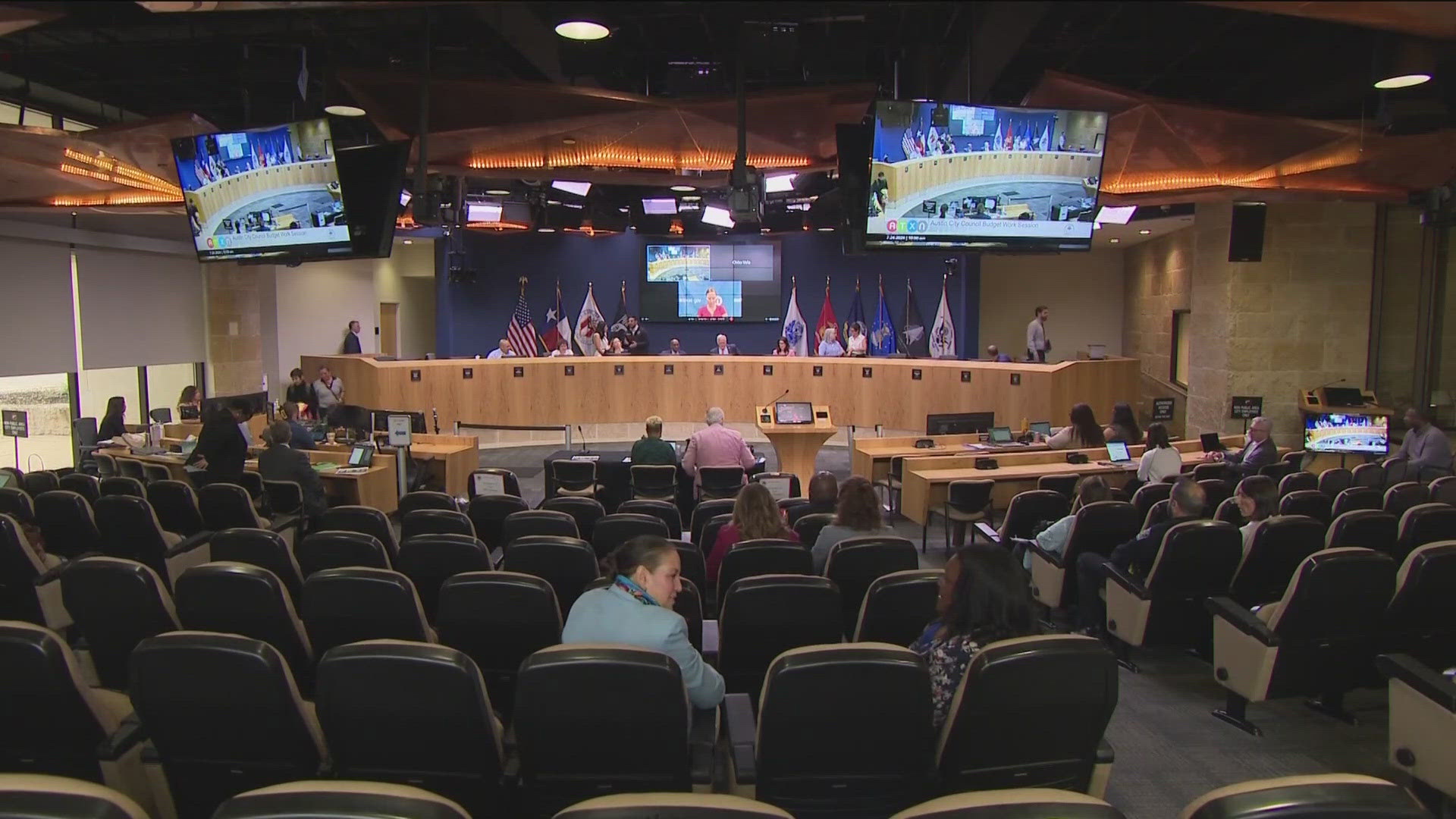AUSTIN, Texas — On Wednesday, the Austin City Council took a closer look at the proposed $5.9 billion budget for the 2024-25 Fiscal Year.
During a work session, they brought up questions they wanted to address about the General Fund.
Police and Fire overtime
First responders’ overtime budgets were a major conversation of the day. The Austin Fire Department says they’ve seen more on-the-job injuries and mental health issues like PTSD, so they are looking at reducing their workweek.
“The fire service, not just in Austin, but all across America, has seen an increase in mental illness and mental health-related issues going on with firefighters today, along with post-traumatic stress disorder,” Austin Fire Chief Joel Baker said. “It's just a change in a paradigm nobody's ever seen before.”
According to a 2018 ordinance, Austin firefighters are required to have four-person staffing for every emergency call, so with vacancies due to injuries, that’s making their overtime budget increase.
AFD’s estimated overtime budget for 2024 is $15,796,607, but their estimated expense is $20,808,258 for overtime. One solution the department proposed, is to work with a third-party vendor that would help firefighters get medical help quicker and receive all the resources they need so they can get back to work sooner.
Austin police are also dealing with increased overtime budget issues. The department’s entire proposed budget for the next fiscal year is $496 million. APD is short about 330 sworn officers and with an estimated overtime budget of $25 million and an expected expense of $47 million, they’re going to have another large overtime spending increase.
The department’s vacancy rate has increased more than 8% from 10.5% in 2020 to 18.9% currently. Some proposed solutions are to have cadet classes running at the same time, a $15,000 cadet recruiting bonus and creating career pathways for 911 call takers to cadets.
Though the police department is low on officers, Interim Chief Robin Henderson said 911 call taker vacancies are decreasing. She said once they finish training the current group, they will only have three vacancies. Staffing for 911 call takers has been an issue for the department for the last few years.
EMS budget
Council members also spoke to Austin-Travis County EMS (ATCEMS) officials about their budget. The department’s main ask is for funding for a smaller mobile unit to respond to Austin’s downtown entertainment district on the weekends.
“What we want to do is make sure that an ambulance is not on Sixth Street dealing with something that might not need a trip to the hospital, and then there’s a life-threatening emergency that comes in somewhere else downtown for a resident and that ambulance has to come from another part of the city,” ACTEMS Chief Robert Luckritz said.
During this year's SXSW, ATCEMS geofenced the downtown area and used smaller Polaris vehicles to respond to incidents downtown. They had a trailer set up on Sixth and Rainey streets so they could treat patients onsite, instead of driving them to a hospital. ATCEMS wants to use this strategy year-round, so they can cut down on unnecessary ambulance uses.
“Ten percent of our patients that we transport to the hospital, 10% of those calls are going to the sobering center," Luckritz said. "We don’t need to use an ambulance for those calls."
The council also brought up the idea of bringing these UTVs, or smaller ambulances, to the Domain area in North Austin because of its similar growing nightlife scene. Councilmember Alison Alter was especially concerned about The Domain’s entertainment area taking away ambulances from areas in her district.
Homeless Strategy Office budget
Addressing homelessness was also top of mind for council members and Austinites alike.
“When you have 35% of the entire budget going to police and 0.2% going to the Homeless Strategy Office, it’s ridiculous,” said Alfredo Reyes Jr., a leader with VOCAL-TX who spoke during public comment.
For the upcoming fiscal year, the Homeless Strategy Office has a proposed budget of $30.3 million. Something that will impact their budget is preparing for the closure of the Marshalling Yard next spring.
The temporary emergency shelter was funded by a pandemic stimulus package, so now the city is closing it. But the office still need to find 200 shelter beds to house everyone.
“We will move those clients to another one of our shelters. More likely than not, what that’s gonna mean is taking one of our two bridge shelters, either Northbridge or Southbridge, and reserving beds in those shelters,” Homeless Strategy Office David Gray said.
But those moves mean that beds will get taken away from people who are moved out of camps. Usually, the Northbridge and Southbridge shelters are used to house people after the HEAL Initiative clears out encampments.
Gray also said the city has $2.1 million of unmet needs for permanent supportive housing. There are already buildings under construction, but no supportive service dollars to help the people who would be moving in, which is a concern for some city leaders.
“We can’t have gotten to this place where we have all of these different levers in motion and all these investments in progress to not continue to build upon that, especially at this critical time,” Councilmember Vanessa Fuentes said.
Homeless Strategy Office leaders say it will be difficult to predict if they will receive more federal dollars to address homelessness.
What’s next?
The council will have three more work sessions before they formally vote on the budget in mid-August. The Aug. 1 work session and Aug. 14 meeting will both have public comment sessions.
A formal vote on the budget will take place anytime from Aug. 14 to 16.

